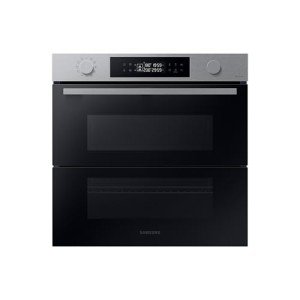The Rise of Built-In Ovens: A Seamless Approach to Modern Cooking
In contemporary kitchens, where style aesthetic appeals blend seamlessly with functionality, one home appliance sticks out as a true game changer: the built-in oven. As house owners and chefs alike continue to look for innovative solutions that improve their cooking experience, built-in ovens have actually ended up being significantly popular. This post checks out the advantages, factors to consider, and patterns surrounding built-in ovens, highlighting why they are an essential feature in contemporary cooking areas.
What is a Built-In Oven?
A built-in oven is a cooking area home appliance developed to be integrated into the kitchen cabinetry of a kitchen area instead of standing alone. Unlike standard freestanding ovens, which can be moved and positioned anywhere, built-in ovens been available in numerous designs and sizes to fit specifically within designated spaces. Offered in single or double setups, these ovens provide a structured look that complements modern kitchen designs.
Benefits of Built-In Ovens
1. Space-Saving Design
One of the most appealing benefits of built-in ovens is their space-saving design. By integrating the oven into cabinetry, you can maximize valuable counter and flooring area. This is especially advantageous in smaller kitchens, where taking full advantage of room is essential. Built-in ovens can be installed at eye level, making them more accessible and decreasing the need to bend down.
2. Visual Appeal
Built-in ovens contribute to a sleek and cohesive kitchen design. Offered in various finishes-- such as stainless-steel, black, white, and customized cabinets-- they can mix flawlessly into the general design. This visual appeal boosts the kitchen's visual harmony and raises the area, developing a contemporary and advanced environment.
3. Boosted Functionality
Many built-in ovens come equipped with innovative cooking innovations, such as convection cooking, steam ovens, and smart features. These improvements permit for versatile cooking choices, making it simpler to achieve professional-level outcomes in your home. Smart built-in ovens can even connect to Wi-Fi, making it possible for users to manage the oven from another location, receive notices, and access a range of cooking programs and recipes.
4. Improved Ventilation
Because built-in ovens can be integrated with kitchen area hoods and ventilation systems, they can help keep much better air quality and reduce cooking smells. This is especially considerable for those who enjoy to prepare with aromatic spices and active ingredients, as an effective ventilation system can keep the kitchen area comfortable and welcoming.
5. Customization Options
Built-in ovens use a broad range of personalization options to match specific cooking designs and needs. From professional-grade home appliances with several cooking modes to compact designs for smaller kitchen areas, property owners can pick the oven that fits their particular requirements. Many manufacturers likewise provide personalized front panels, allowing you to match the oven's appearance to your cabinetry for a really merged look.
Considerations When Choosing a Built-In Oven
While built-in ovens have many advantages, there are very important factors to consider to remember before making a purchase:
1. integrated ovens and hobs -in ovens generally come with a greater price tag than their freestanding equivalents due to their style and installation requirements. It's important to aspect in both the expense of the oven and any additional expenses related to cabinetry adjustments or installation.
2. Setup Requirements
Setting up a built-in oven frequently requires professional support, particularly if you require to customize existing cabinetry. Make sure that you think about any costs connected with installation, consisting of labor and possible kitchen cabinetry modifications.
3. Size and Dimensions
Before buying a built-in oven, determine the designated area properly to ensure a proper fit. Built-in ovens can be found in various sizes and setups, so selecting one that aligns with your needs and cooking area style is essential.
4. Lifestyle and Usage
Consider your cooking practices and needs when picking a built-in oven. If you regularly host big events, a double oven might be more beneficial. On the other hand, if you have a compact kitchen area, a single-wall oven may be sufficient.
Patterns in Built-In Ovens
The kitchen area appliance market is continually progressing, and built-in ovens are not exempt from emerging trends. Some present trends consist of:

Smart Technology Integration: With the increase of smart home innovation, built-in ovens now typically feature connectivity choices. This permits users to keep an eye on cooking development and adjust settings through mobile apps.
Energy Efficiency: As sustainability becomes a priority, many makers are buying energy-efficient built-in ovens that reduce energy consumption while maintaining performance.
Multi-functional Designs: Built-in ovens now provide features such as air frying, slow cooking, and steaming, supplying versatility that fulfills a vast array of cooking methods.
Conclusion
Built-in ovens undoubtedly represent a best blend of design, function, and convenience in today's kitchens. As more homeowners choose this modern option, the focus moves to creating a cooking area that is as aesthetically pleasing as it is practical. Whether you are building a new home or renovating your kitchen, considering a built-in oven could raise your culinary experience and transform your cooking area into a stylish and practical haven. With a range of alternatives offered and continuous innovations in technology, built-in ovens stay a standout option for both novice cooks and culinary enthusiasts alike.
